In this blog, we will explore a close up observation of seed germination and root development using Soil³.
Did you know close to 60% of a plant’s biomass is underground? It reminds me of my astronomy professor from Appalachian State University when he told us the stars made 10% percent of the Universe because it was the only thing we could see. I am sure that statistic is off now since it’s been over two and a half decades ago but you get my point. We can not reach into the Universe to inspect 90% of the unknown but we can take a sneak peek of 60% of a plant’s underground biomass.
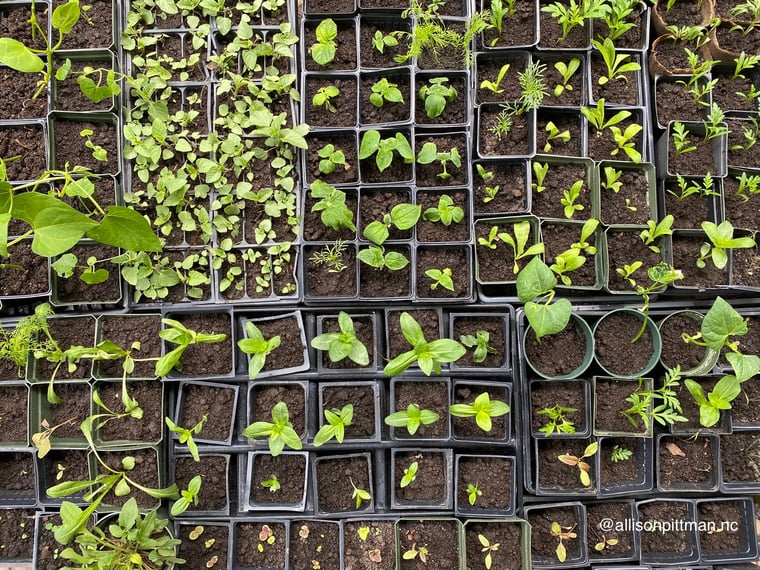
A smorgasbord of seedlings for the 2020 garden season.
Stayin’ Alive
When teaching youth about gardening, repurposed CD cases were always a hit for making mini-terrariums and observing seed germination of beans. Kids would ask parents for a CD case, and parents would wonder what on earth CD cases had to do with horticulture. Then our class would get distracted talking about music which always provided great ice breakers to start the growing season. We would start the experiment on a Monday and end on Friday with kids taking home their bean sprouts.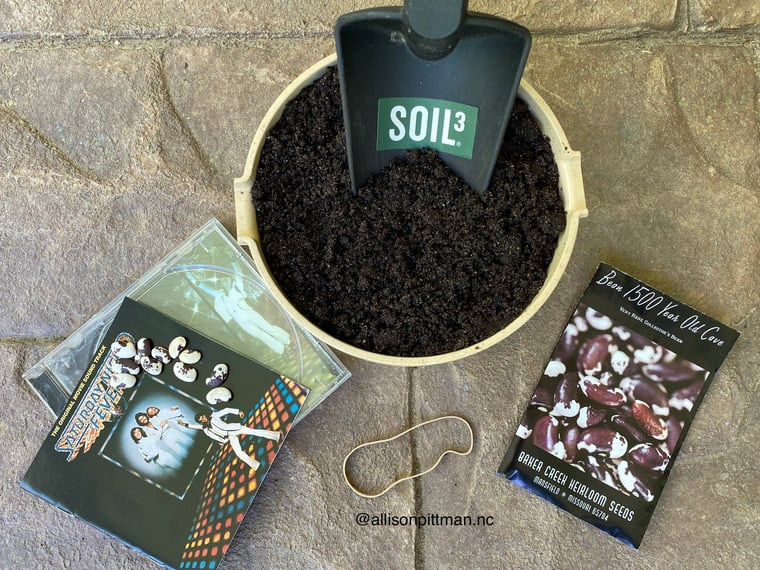
Materials needed for this experiment.
For this Soil³ blog, I found the infamous “Stayin’ Alive” Bee Gees CD. The Saturday Night Fever album made me chuckle reminiscing about the opening scene of John Travolta strutting his stuff on the streets of NYC when disco was king. And I thought how ironic to have it at the top of my stash. Studies have concluded “Stayin’ Alive” provides the ideal rhythm of 100-120 compressions per minute for CPR. It is the rhythm that keeps life going and it gave me deja vu to my previous blog post where I diverged slightly discussing the evolution of plants and their strategies to survive.
Seeds are Like Mini Computers
Prior to horticulture, I worked in the information technology field as a software engineer. So, I occasionally find myself comparing plants to computers, and their growth mechanisms to coding. Seeds are like mini computers programmed to germinate (the process a seed undergoes to turn into a plant) when the right variables come together. In this case the variables are water, temperature, and oxygen. Seeds serve many purposes. Some seeds may be eaten. Examples include sunflower seeds, pumpkin seeds, and even coconuts (very large seeds). We can extract oil from seeds such as sesame seeds or grind seeds of grain to make flour.
Seeds serve many purposes. Some seeds may be eaten. Examples include sunflower seeds, pumpkin seeds, and even coconuts (very large seeds). We can extract oil from seeds such as sesame seeds or grind seeds of grain to make flour.
In our experiment, we are growing a bean plant just like many of us will grow in our gardens this season. Seeing the magic of germination never gets old especially when we can view it within the confines of a CD case. From a youth gardening perspective, I can’t tell you how many times kids were shocked to see the transformation of their seeds within 5 days.
Beans - A Deeper Look
I selected a bean for this experiment since it is a large seed and quickly germinates. The bean I specifically picked is called the ‘1500 Year Old Cave Bean’ offered by Baker Creek Heirloom Seeds. It received its long name because it is believed to have been found in a clay pot sealed with pitch in a cave in New Mexico. Just this cool story alone made me want to purchase this variety.
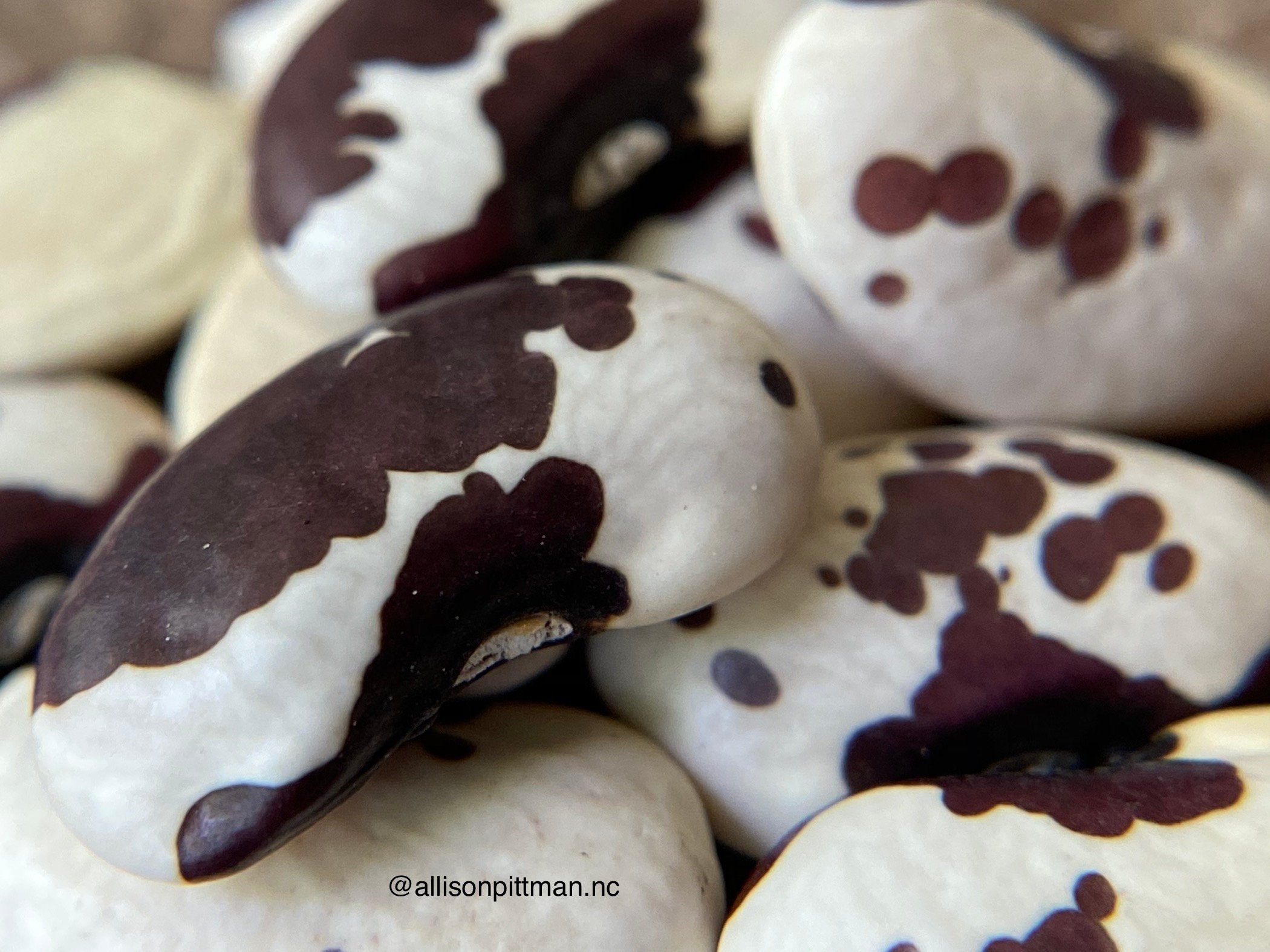
In my last blog, I discussed the importance of bees and their role with pollination. As bees forage flowers, the pollen grains transfer to the flower’s stigma in which pollination occurs producing a seed. Each seed contains a dormant baby plant (an embryo) surrounded by stored food called endosperm.
Each bean seed is packed with the protein provided by that embryo and the starch from the endosperm. That is why beans have more protein than your average vegetable. (The USDA Food Patterns indicates beans and peas may be counted as part of the Protein Foods Group.)
Left, Right, Down, Up
Sometimes I’m asked which direction seeds should be positioned in the ground. In nature, do seeds magically fall to the ground and orient themselves in one particular direction every single time? Of course not. Therefore, the high level answer is it doesn’t really matter for the majority of cases.
Around 500 million years ago, one of the most important events in evolutionary history occurred. Plant life moved from water to land. A plant’s strategy to stayin’ alive meant root systems had to grow downwards providing two functions: anchoring the plant in the soil and providing water and nutrients for the plant.

Left, right, down, up - the beans were placed in all directions.
Regardless of a seed’s position, its mini computer is programmed to grow towards the pull of gravity. Roots grow down and shoots grow up. In botany, fancy words describe this directional growth:
- Positive gravitropism describes root’s downward growth
- Negative gravitropism describes shoot’s upwards growth toward the sunlight, the opposite direction of gravity.
In my repurposed CD terrarium, each bean seed is positioned differently. Regardless of the position, the bean’s growth follows the pull of gravity. A side note: garlic cloves, asparagus crowns, bulbs, potato slips, etc. are specific parts of a plant (not seeds) that already contain roots and should be planted root side down.

The roots all grew downwards - no matter what position the bean is planted.
Everything Needs Water
The first step in germination involves the intake of water, a process called imbibition. In our CD experiment, seeds almost double in size after one day. The amount of water is critical. Too much water causes seeds to rot and too little water causes seeds to die. A little daily mist from a water spray bottle provides the right amount of water for our experiment.
 Our experiment is now set up. Water daily with a light mist and watch the growth happen through the clear CD case.
Our experiment is now set up. Water daily with a light mist and watch the growth happen through the clear CD case.
Spray the Soil³ compost, secure the CD case with a rubber band allowing a slight opening, and position it vertically. Next, observe the beans over the next few days providing a little daily mist.
Soil³ provides the nutrients the roots seek but without water, root growth is stunted. That is why you may have heard it’s best to deep water a plant once or twice a week versus watering daily. Deep watering encourages roots to grow deeper in the soil providing better anchoring of the plant. Watering daily and too frequently makes roots ‘lazy’ allowing them to stay closer to the soil surface since that is where the water is located.
‘Get Down On It’, Radicles!
I do apologize for more disco references, but Kool & the Gang is buzzing in the background while I’m observing beans in my Stayin’ Alive CD terrarium.
Over the next day or two, the embryonic root emerges from the beans. It almost looks like a dog’s tail when it first appears! Embryonic roots are also known as radicles or primary roots. The radicles grow downward where the tip of the radicle (root cap) propagates and multiplies via specialized embryonic cells. Root hairs develop as the radicles continue to grow. All of this root development is searching for two things: nutrients and water.
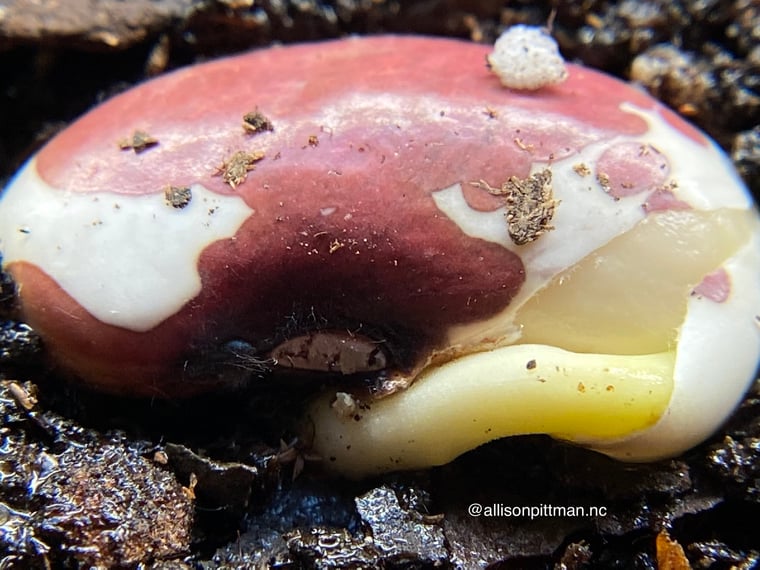
The embryonic root, also known as the radicle, emerges from the bean.
Imagine you are in the produce section at the grocery store. You see strawberries and take the time to pick the best package because it is on your list for that delicious strawberry shortcake. Then you see radishes and walk pass them because they are not needed. Roots are similar. If there are not many nutrients or water in a particular spot in the soil, roots bypass that section and continue navigating for things they do need. That is why plants can become root bound in their pots. The roots end up doing Dale Earnhardt Jr. circles searching and navigating for the nutrients they need.

A root bound plant where the roots are ‘bound’ by some barrier - in this case it was a pot.
Once nutrients and water are found, the roots grow stronger and create more root development. Gravitropism is further transmitted from cell to cell by a growth hormone called auxin ensuring the plant grows in the correct direction. Again, one must be in awe (or maybe it is just my inner-nerd) of how a seed’s mini computer is programmed for stayin’ alive.

The tip of the radicle, root cap, grew out of the CD by the third day! There are now three beans instead of four because one bean was not viable.
‘Get On Up’ Cotyledons!
Yes, another cheesy disco nod but who doesn’t enjoy some Tyrone Davis? Towards the end of the experiment, the green shoots of the bean appear as the seed coat breaks away. This is always the big “oooh… ahhh” moment because something green appears and it looks like a plant!
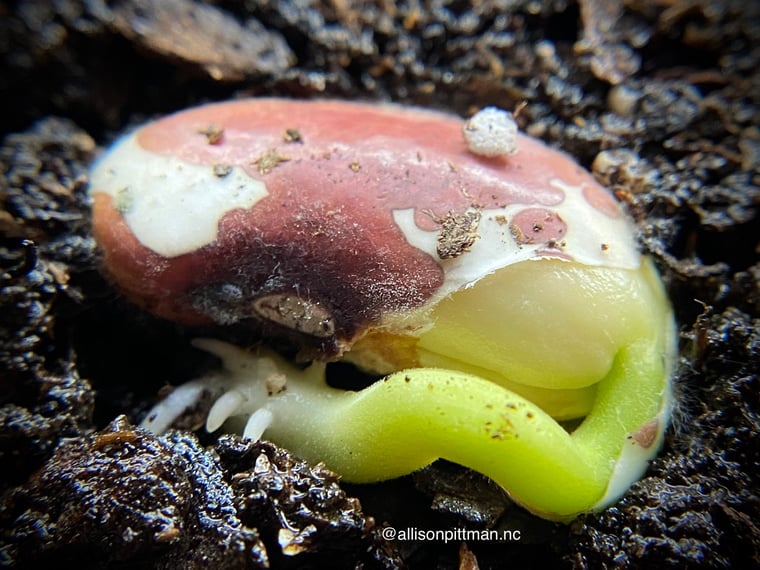
Seed coat breaks away revealing the cotyledons.
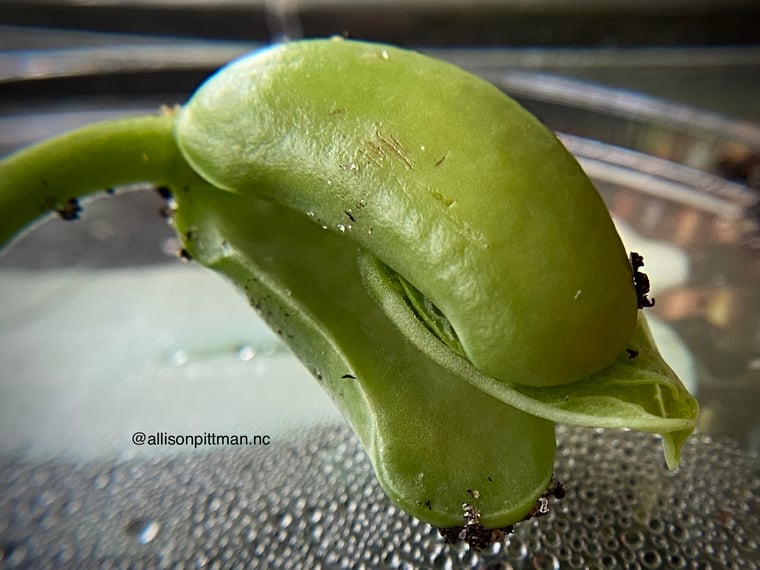
The first set of true leaves emerge surrounded by the cotyledons
Sometimes our class sessions compared and contrasted seed germination in different soil mediums such as sand, potting soil, etc. And most of the time, beans germinated at a similar pace regardless of the soil medium. Why is that? It all goes back to that stayin’ alive plant mentality. A seed contains everything it needs to germinate and grow, under the right conditions, up to when the first set of true leaves form.
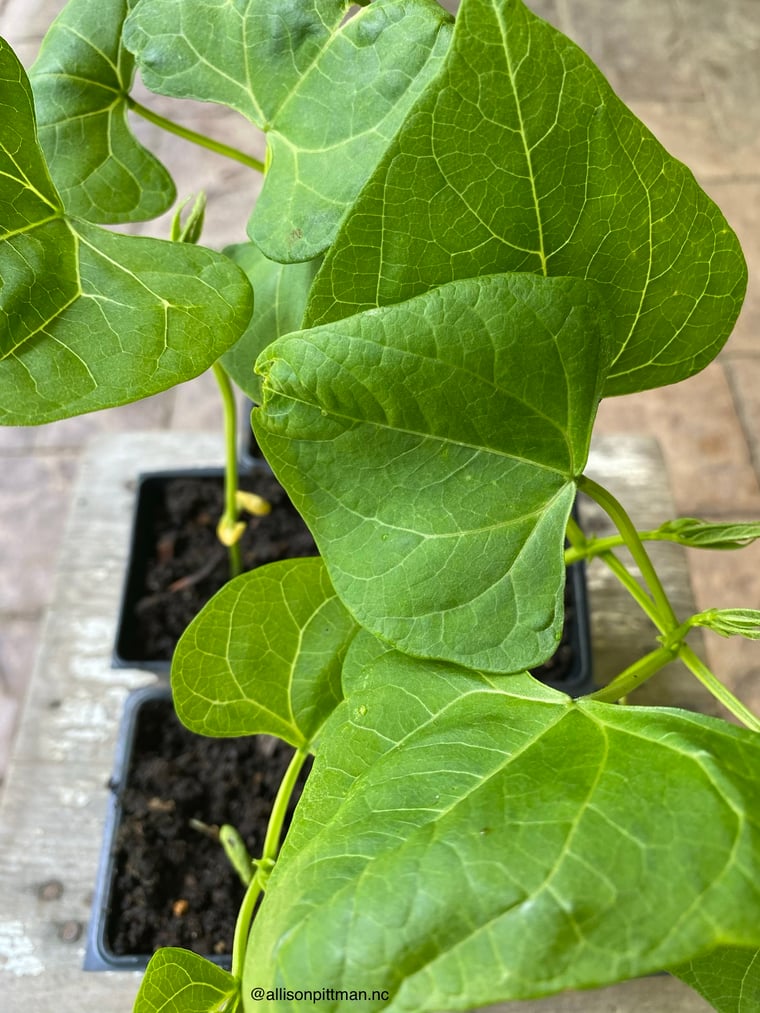
These are the beans' true leaves. You can see the yellowed cotyledons towards base of stem.
For our beans (and many vegetables or flowers), the cotyledons which look just like leaves (endosperm) contain just the right amount of food source for stayin’ alive until the plant’s true leaves form. Then the plant’s leaves become the bread winner, so to speak, using photosynthesis to create food. As the cotyledons begin to turn yellow, wilt, and fall off… I can imagine them clasping their hands together and saying “I’m done. Job complete. True leaves, you can take it from here. Later alligator!” mic drop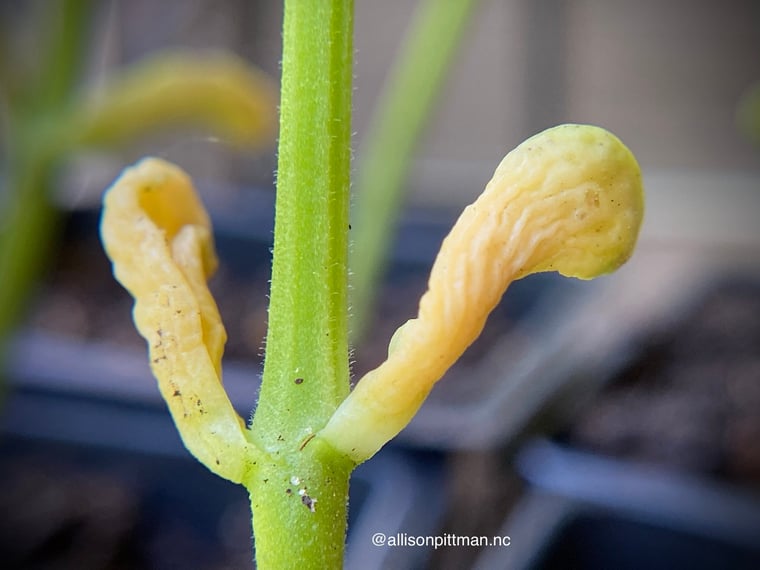
Their job now done, the cotyledons are about to fall off. Later alligator!
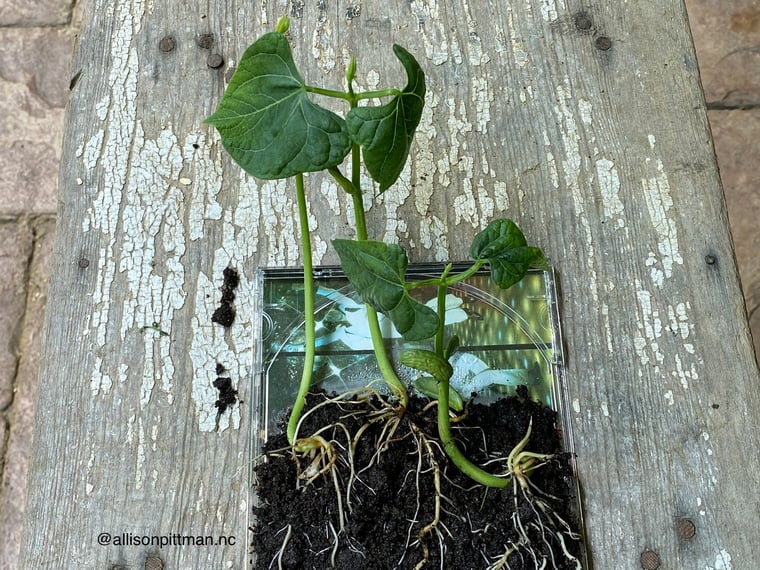
This was day 5 - the last day of our experiment.
View Soil Like a Bank Account
I would like to diverge slightly. Last year, I had the pleasure to attend a Soil³ event in Mooresville, NC. Brie Arthur and Joe Lamp’l presented. Joe had the best analogy I have heard to describe the importance of soil and plant health:
When you add compost such as Soil³ to your soil, it is equivalent to depositing money in your bank account. Compost replenishes nutrients to the soil. And every time you plant something in the soil, it is like a withdrawal. Plants retrieve nutrients and minerals from the soil. We all know what happens when we make continuous withdrawals from a bank account without any deposits. The same can be said for soil.
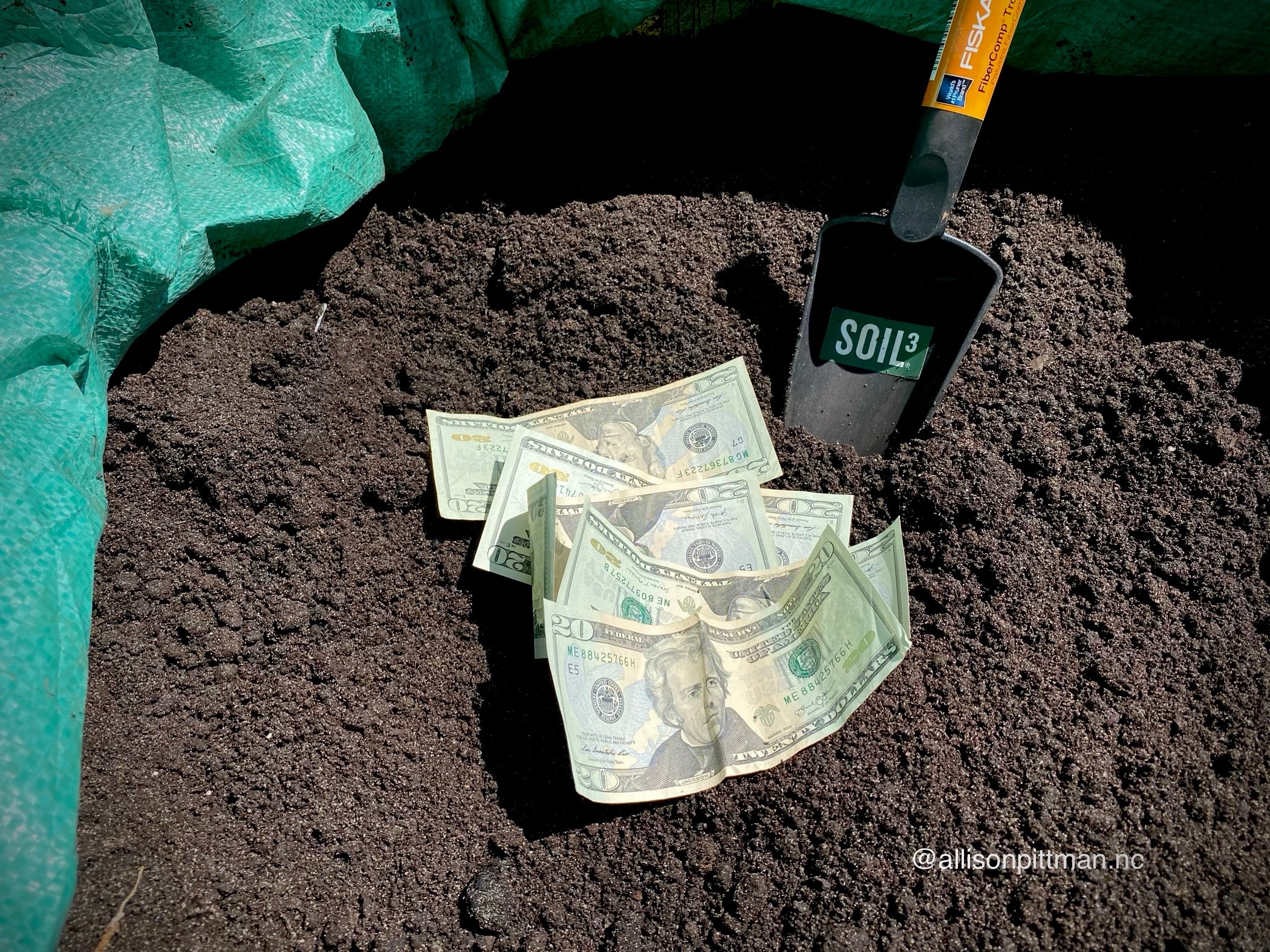
Plus, my garden mentor shared great advice regarding how to spend a budget when starting a new garden from scratch. If you only have $100, spend $75 on soil and $25 in plants during the first year. You can purchase all the beautiful plants you like but it is pointless to do so if you don’t have good soil to plant them in.
Conclusion
In conclusion, I hope you enjoyed our journey through the early developments of a plant’s life and a peak into some of the meticulous mechanics of seeds. (cue Gloria Gaynor’s ‘I Will Survive’) And yes, I will also conclude my love for disco.
I would like to end this blog with answering a question regarding seed viability. Through a Google search, you will find lots of charts out there listing how many years certain seeds will last under favorable conditions via research completed from universities and seed companies. They are good charts providing basic guidelines.
However, I prefer a quick germination test. I will take 10 to 20 seeds out of a packet. Place them in a damp paper towel in a warm area and see how many germinate. This will provide a ballpark percentage of how viable the seeds are.
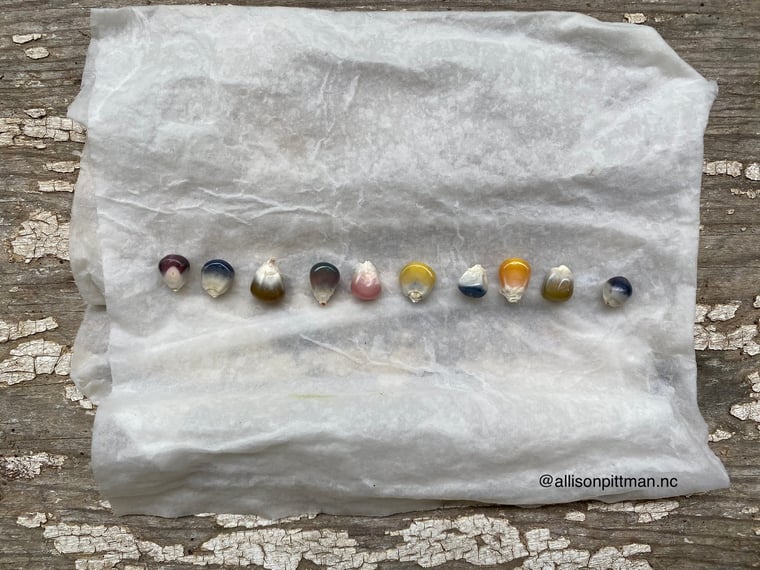
A germination test for glass gem corn using a damp paper towel to determine seed viability.
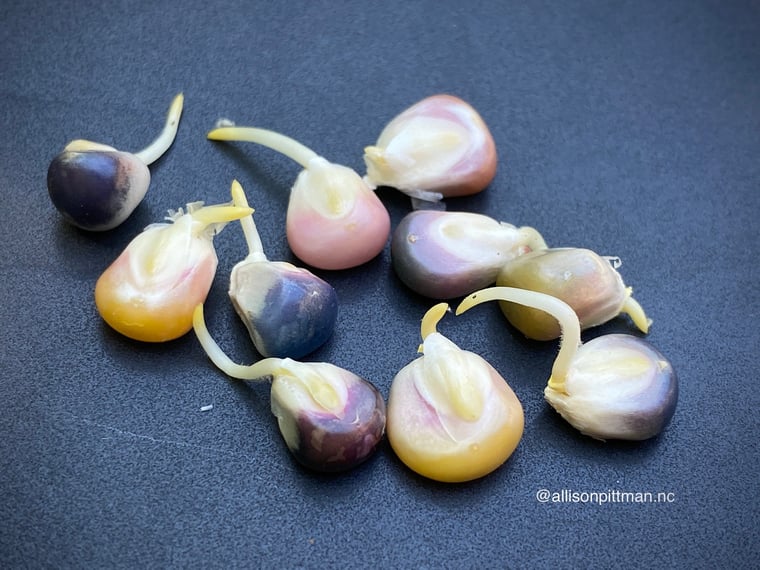
After five days all the corn germinated from the paper towel germination test.
Until next time, garden on!
Allison
All photos by Allison Pittman.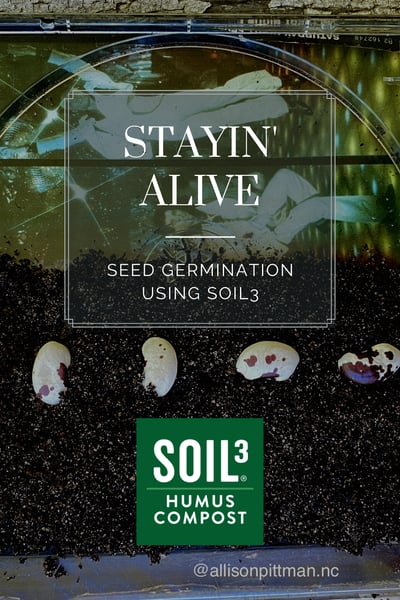
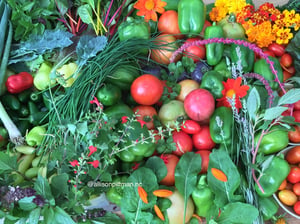
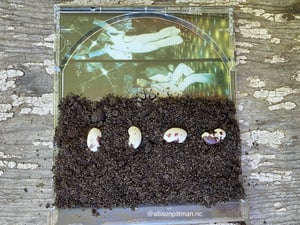

Did this help you out? Have any questions for clarity? Leave a comment below!